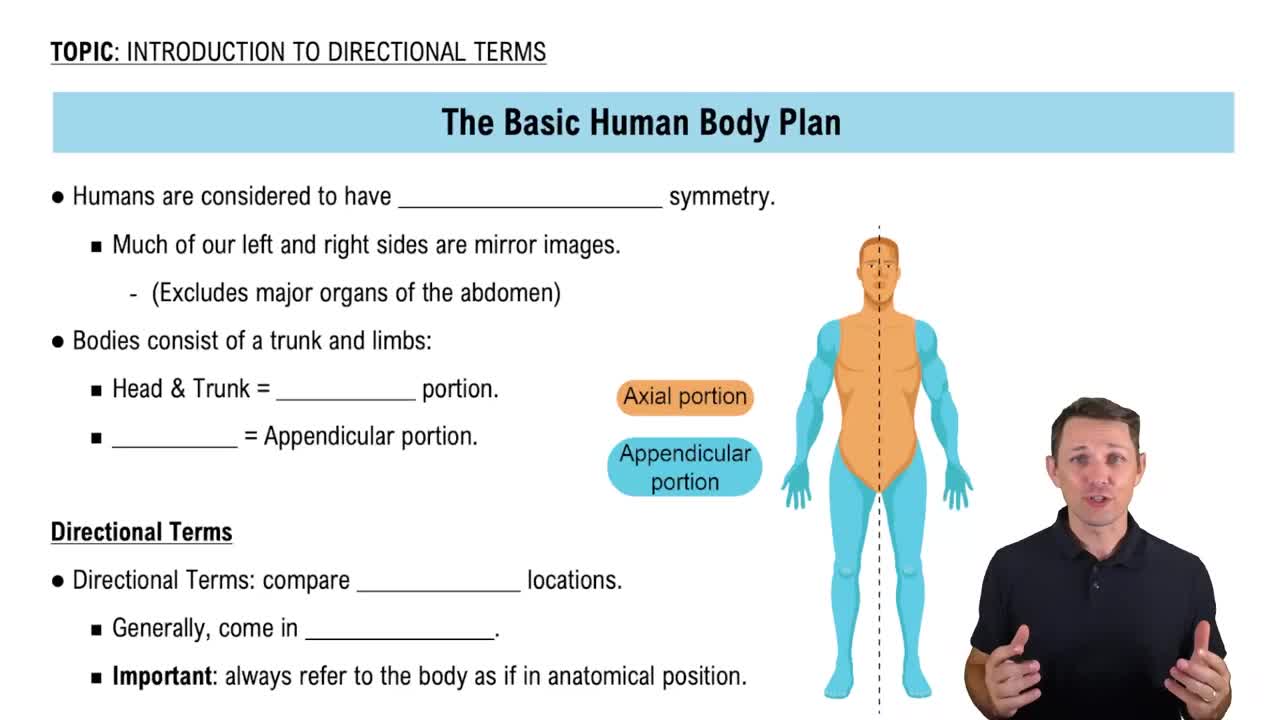Here are the essential concepts you must grasp in order to answer the question correctly.
Anatomical Position
The anatomical position is a standardized way of observing or imaging the body that allows for clear communication among healthcare professionals. In this position, the body is standing upright, facing forward, with arms at the sides and palms facing forward. This orientation serves as a reference point for describing the locations and relationships of different body parts.
Recommended video:
Directional Terms
Directional terms are specific language used to describe the locations of structures in relation to one another in the body. Terms such as anterior (front), posterior (back), superior (above), and inferior (below) rely on the anatomical position for accurate interpretation. Understanding these terms is crucial for effective communication in anatomy and clinical practice.
Recommended video:
Introduction to Directional Terms
Clinical Relevance
Understanding the anatomical position is clinically relevant as it aids in the assessment, diagnosis, and treatment of patients. It provides a common framework for healthcare providers to describe symptoms, injuries, or surgical procedures. This shared understanding enhances collaboration and reduces the risk of miscommunication in medical settings.
Recommended video:
Review of Relevant Brain Anatomy




